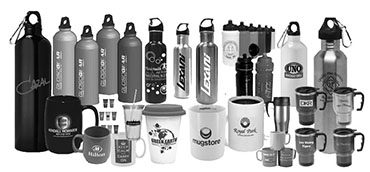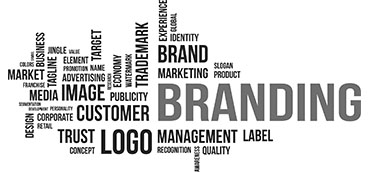Promotional Products
The power of "FREE" is undeniable. Whether it’s a giveaway at a tradeshow, an in-store freebie, or a fun gift for your employees, giving out something for nothing is a proven way for your business to get people’s attention.
Whether the freebies are clothing, clocks, mugs, pens, or any of a thousand other items, they fall into a broad category called Promotional Products. The category includes free products distributed as “advertising specialties,” “premiums” that are given to in response to specific actions, tradeshow giveaways, and business gifts that can de decorated in many different ways.
Shop Promotional Products
Decorating Types
The types of decorating options available for promotional products can be confusing. Here is a list of available ways to personalize a promotional product or advertising specialty and their meanings.
4-color Process
A color image is separated into 4 different color values using filters and screens (usually digital). The result is a color separation of 4 images. When transferred to printing plates and printed on a printing press with the colored inks, cyan (blue), magenta (red), yellow and black, the original color image is reproduced. These four colors can be combined to create thousands of colors just as your computer printer does.

Colorfill
Screen printing an image and debossing it onto a surface.

Deboss
The depression of an image into a material’s surface, causing the image to sit below the product surface, is a deboss.

Decal
Artwork is produced on a transparent decal and applied to the product.

Die-casting
Injecting molten metal into the cavity of a carved die (or a mold).

Die-striking
Production of emblems and other flat promotional products by striking a blank metal sheet with a hammer that holds the die.

Embroidery
A design is stitched into fabric through the use of high-speed, computer-controlled sewing machines. Artwork must first be "digitized;” the specialized process of converting two-dimensional artwork into stitches or thread. Certain formats of art, such as a jpeg, tif, eps or bmp cannot be converted into an embroidery tape. The digitizer must actually recreate the artwork using stitches. It then programs the sewing machine to sew a specific design in a specific color with a specific type of stitch. This is the process known as digitizing.

Emboss
Impress an image in relief to achieve a raised surface.

Etching
A process in which an item is covered with a protective coating that resists acid to create the artwork. This leaves a bare surface and a protected surface. It is then exposed to acid. The acid attacks only the exposed surface leaving the image etched onto the surface.

Hot Stamp
Setting a design on a metal relief die or plate, which is then heated and pressed onto the printing surface to achieve a deboss.

Laser (Engraving)
Art or lettering is cut into a material by a laser beam that vaporizes the portion exposed through openings in a template.

Laser or Foil Stamp
Applying metallic or colored foil imprints to vinyl, leather or paper surfaces. Usually used on a deboss.

Offset Printing
The transfer of ink from a metal printing plate to a rubber-covered cylinder is used on more complex artwork and for higher quantity runs.

Pad Printing
A recessed surface is covered with ink. The plate is wiped clean, leaving ink in the recessed areas. A silicone pad is then pressed against the plate, pulling the ink out of the recesses and pressing it directly onto the product.

Screen Printing / Silk-Screening
An image is transferred to the printed surface by ink, which is pressed through a stenciled screen and treated with a light-sensitive emulsion. Film positives are put in contact with the screens and exposed to light, hardening the emulsion not covered by film and leaving a soft area on the screen for the squeegee to press ink through. You must create a different screen for every color you are going to print and screen each color separately allowing drying time in between.

Sublimation
Dye transfer process where the image consists of a colored dye permanently embedded into the pores of the material surface. Used to imprint messages, graphics and photographs on a variety of items, primarily mouse pads, mugs, t-shirts, caps and trophy medals.





